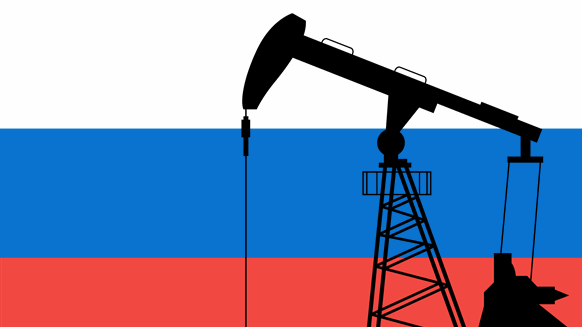Wherever you look outside Russia, there are precious few signs of the oil production cuts that President Vladimir Putin and other government officials say are underway.
For Russia’s allies in the OPEC+ grouping, which have pledged to cut their own output to prop up oil prices, the country’s failure to pull supplies from the world market could be a source of frustration .
Shipments of Russian crude beyond the country’s borders are rising, not falling, even though the country has reportedly been cutting output by 500,000 barrels a day for nearly three months in retaliation for sanctions and price caps imposed by the Group of Seven nations. Yes, outward flows of refined products are falling, but they always fall now. In fact, they fell slightly less than they usually do between the first and second quarters.
Crude shipments from Russian ports in the four weeks to May 21 were more than 480,000 barrels a day more than in the four weeks to February 26, according to ship-tracking data monitored by Bloomberg. February was the reference month for the Russian production cut.
The same pattern is seen in Russian crude oil flows by the analysis company Kpler. Its data shows an increase of about 320,000 barrels per day during the same period. Either way: streams don’t drop.
In contrast, shipments in the most recent period have increased by more than 1 million barrels per day compared to the last four weeks of last year.
This figure is important, because Russia has claimed that seaborne crude flows have been supported since production cuts by the diversion of barrels previously delivered by pipeline to several European countries.
But the numbers show that those pipeline flows were reduced well before the supposed production cut took effect.
Germany stopped importing Russian pipeline crude this year, while the last supplies to Poland were in January. The flow of pipeline crude from Russia to Europe had been redirected before the production cut was even announced, let alone implemented. Channelized flows have remained stable since February.
So if crude oil flows aren’t declining, perhaps the production cut is being felt in refined product shipments?
Here the picture is more complicated, but ultimately there is little evidence of a genuine decline.
Using Kpler data to track weekly product shipments from Russian ports, volumes have fallen sharply from a high of about 3.5 million barrels per day in the week to March 26. In the week ending May 21, they had fallen by 1 million barrels a day.
On the surface, that’s a lot. Even using four-week averages to smooth out some of the extremes, the drop is more than 600,000 barrels per day.
But the trajectory of Russia’s refined products in the first quarter of this year has been smooth, with wild swings around the timing of the imposition of a European Union ban on seaborne imports that went into effective at the beginning of February.


